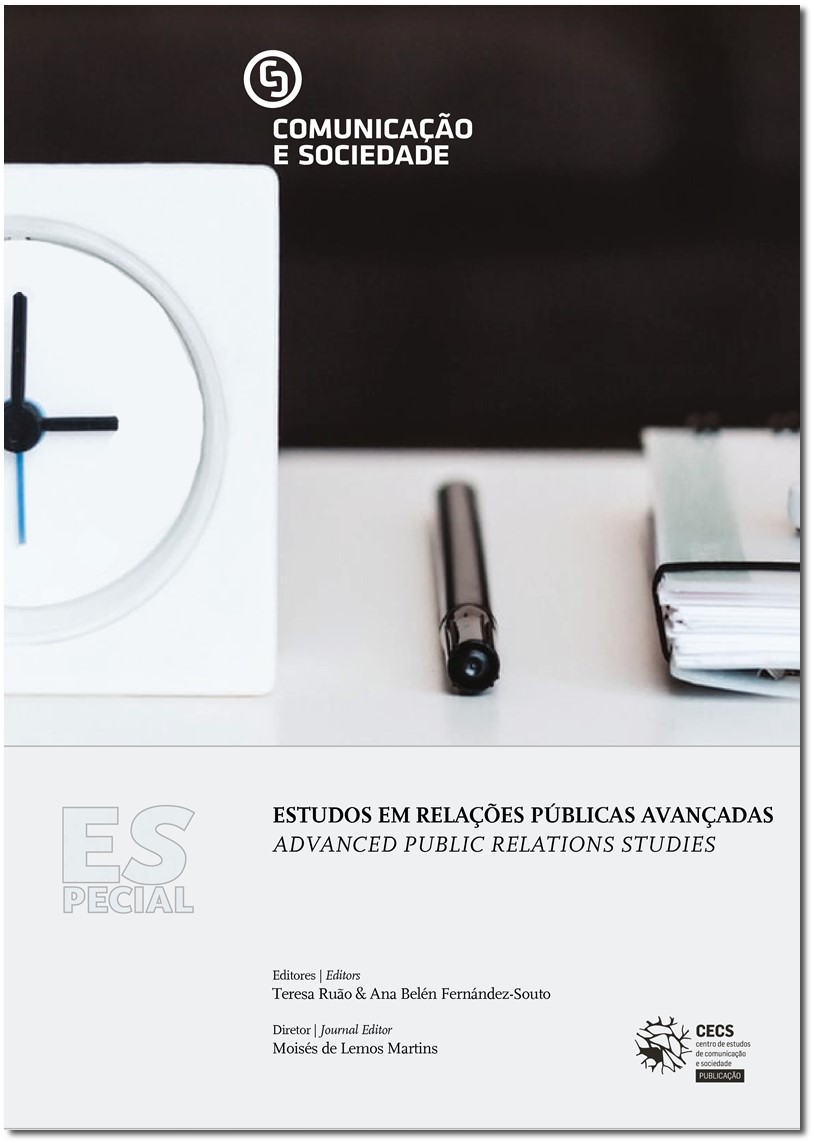Public relations in growth hacking strategies in digital communication: the case studies of Wallapop, Westwing and Fotocasa
DOI:
https://doi.org/10.17231/comsoc.0(2020).2750Keywords:
public relations, growth hacking, content marketing, digital communication, influencer marketingAbstract
This work focuses on the strategic planning of public relations in well-known digital brands, based in Barcelona. This is the host city of the international technology fair “Mobile World Congress” and, at the same time, is in fifth place in Europe, in terms of the number of existing start-ups. The qualitative methodology, using the case study, was the research strategy used, which favoured triangulation in data collection through in-depth interviews and document analysis. Three brands founded on the digital environment were studied, whose activity is developed in the online environment. The results of the study showed that the public relations planning of the analysed digital brands is carried out in four stages: research, planning, implementation and evaluation. The public relations actions of these brands are integrated into marketing strategies and focus on advertising, content marketing and influence marketing actions, which combine creativity and analysis in order to achieve growth hacking goals. The strategies of these brands seek to achieve communication goals in the short term and the techniques used are guided by a management approach by objectives.
Downloads
References
ADECEC. (2008). La comunicación y relaciones públicas en España-radiografía de un sector. Retirado de http://prnoticias.com/images/stories/comunicacion/ARCHIVOS/presentacin_del_estudio_adecec.pdf
Aguilera, J. (2016). La gestión de cuentas en la agencia de comunicaciones de marketing. Barcelona: ESIC Editorial.
Armstrong, G. & Kotler, P. (2003). Fundamentos de marketing. Nova Jersey: Prentice Hall.
Bernays, E. L. (1923). Crystallizing public opinion. Nova Iorque: Boni and Liveright.
Castells, M. (2001). La galaxia internet. Reflexiones sobre internet, empresa y sociedad. Barcelona: Plaza y Janés.
Cuenca, J. (2017). Cómo hacer un plan estratégico de comunicación. La investigación estratégica preliminar. Barcelona: Editorial UOC.
Drucker, P. (1954). The principles of management. Nova Iorque: Harper & Brothers.
Ellis, S. (2010, 26 de julho). Find a growth hacker for your startup [Post em blogue]. Retirado de http://www.startup-marketing.com/where-are-all-the-growth-hackers
Ellis, S. & Brown, M. (2018). El método hacking growth: qué hacen compañias explosivas como Facebook, Airbnb y Walmart para ser líderes en el mercado. Barcelona: Penguin Random House.
García Carballo, C. (2012). Mensajes con fines publicitarios que tornan en relaciones públicas en las redes sociales: el caso de Starbucks España y Cash Converters España. Revista Internacional de Relaciones Públicas, 4(2), 145-172. https://doi.org/10.5783/RIRP-4-2012-07-145-172
Kaplan, A. M. & Haenlein, M. (2010). Users of the world, unite! The challenges and opportunities of social media. Business Horizons, 53(1), 59-68. https://doi.org/10.1016/j.bushor.2009.09.003
Katz, E. & Lazarsfeld, P. (1955). Personal influence. Nova Iorque: Free Press.
Kotler, P. (2003). Marketing management. Nova Jersey: Prentice Hall.
Marca, G. (2017). Cómo hacer un plan estratégico de comunicación Vol. IV. La investigación estratégica de evaluación. Barcelona: Editorial UOC.
Marston, J. E. (1963). The nature of public relations. Nova Iorque: McGraw-Hill.
Matilla, K. (2017). Cómo hacer un plan estratégico de comunicación. Un modelo de planificación estratégica, paso a paso. Barcelona: Editorial UOC.
Mintzberg, H. (1979). The structuring of organizations. Nova Jersey: Prentice Hall.
Pulizzi, J. & Barret, N. (2009). Get content get customers: turn prospects into buyers with content marketing. Nova Iorque: McGraw Hill Professional.
Pulizzi, J. & Rose, R. (2017). Killing marketing: how innovative businesses are turning marketing cost into profit. Nova Iorque: McGraw Hill.
Ries, A. & Ries, L. (2003). La caída de la publicidad y el auge de las relaciones públicas. Barcelona: Urano.
Rushkoff, D. (1994). Media virus. Nova Iorque: Random House Publishing Group.
Schultz, D. E. & Kitchen, P. J. (2000). A response to ‘theoretical concept or management fashion’. Journal of Advertising Research, 5(40), 17-21. https://doi.org/10.2501/JAR-40-5-17-21
Schultz, D. E. & Patti, C. H. (2009). The evolution of IMC: IMC in a customer-driven marketplace. Journal of Marketing Communications, 15, 75-84. https://doi.org/10.1080/13527260902757480
Strauss, A. & Corbin, J. (1998). Basics of qualitative research: techniques and procedures for developing grounded theory. Thousand Oaks, CA: Sage.
Trusov, M., Bucklin, R. E. & Pauwels, K. (2009). Effects of word-of-mouth versus traditional marketing: findings from an internet social networking site. Journal of Marketing, 73, 90-102.
Wilcox, D. L., Cameron, G. T. & Xifra, J. (2012). Relaciones públicas: estrategias y tácticas. Madrid: Pearson Educación.
Downloads
Published
How to Cite
Issue
Section
License

This work is licensed under a Creative Commons Attribution-NonCommercial 4.0 International License.
Authors own the copyright, providing the journal with the right of first publication. The work is licensed under a Creative Commons Attribution 4.0 International License.












